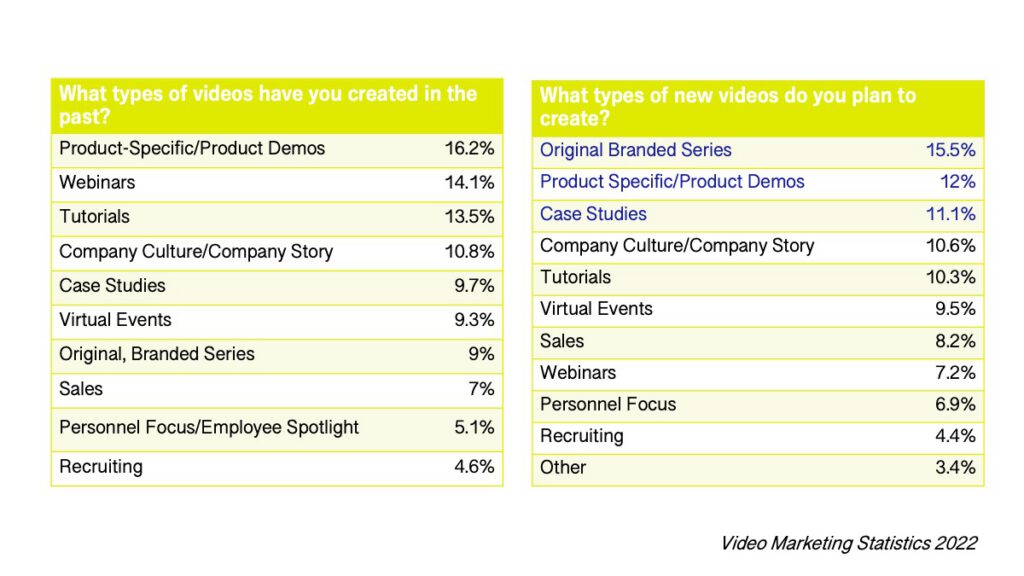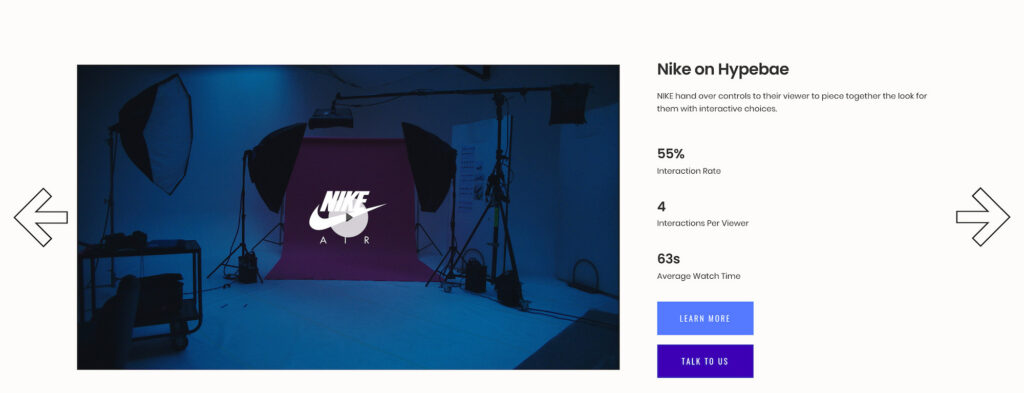
Interactive video is gaining attention as a new method of video marketing. Unlike traditional “just watch” videos, its main feature is that viewers can take actions directly on the video.
From TV commercials to YouTube and TikTok, visual media has long been used for promotion. However, this article revisits the growing demand for video marketing and explores how interactive videos are being utilized today.
Changes in Video Marketing Demand
Between 2019 and 2021, the COVID-19 pandemic significantly transformed marketing strategies. Offline events that required physical presence shifted to webinars, enabling convenient access from anywhere. According to Impress Research Institute’s “Video Streaming Business Report 2020” (*1), when asked about increased activities during stay-at-home periods, 27.5% of smartphone users answered “watching free videos” — the highest percentage.

Regarding what viewers seek in video content, demand extends beyond entertainment and hobbies to include information about products, services, and favorite brands (HubSpot, 2018).
From a business perspective, 86% of marketing professionals consider video a powerful tool, and 78% said it directly helped increase sales. Additionally, video content has been shown to increase website traffic, acting as a bridge between businesses and their audiences (Wyzowl, 2021).
This reinforces the idea that video content is a crucial function of marketing. In today’s digital world, video has become a standard method of visual storytelling — vividly illustrating how a business can transform individuals or society. Given its effectiveness in communicating with brand fans, this shift is only natural.
Effectiveness, Expectations, and Applications of Video Content
Perceived Effectiveness by Marketers (Wyzowl, 2020)
- 83% of marketers reported generating leads using videos in their campaigns.
- 80% said video contributed to sales.
- 95% believed video helped users better understand their products or services.
Consumer Expectations (Wyzowl, 2020)
- When asked how they want to learn about a product or service, 73% preferred short videos.
- 96% had watched explainer videos to learn more about a product/service.
- 78% had purchased or downloaded software or an app after watching a video.
According to Wistia’s 2022 “State of Video” report, 55% of brands planned to increase video production budgets by more than 5%. New types of videos were being considered, including brand messaging, product introductions, demos, and case studies.

Quality Expectations for Video Marketing
Many companies believe high-cost, high-quality video campaigns are necessary, but the cost-effectiveness of a video should be evaluated based on usage and duration. While more time may improve video quality, cost must be balanced. Demanding “low cost and high quality” is often unrealistic. Recognizing key priorities is essential to avoid misalignment. Going forward, marketers must manage cost, quality, and speed in an agile manner.
Key Points for Video Marketing
- Capture the user’s attention in the first 10 seconds
- Brand awareness videos should be 15–60 seconds long
- Promo videos aimed at lead generation or purchases: 30 seconds to 5 minutes
- Promo videos should highlight how to purchase, product details, how to share product pages, and provide downloadable information
- Implement diverse performance metrics (e.g., impressions, views, frequency, reach, unique reach)
- Dig deeper into analytics to determine actual campaign performance
- Don’t forget to send thank-you and upsell videos after conversion
Balancing Cost and Quality: Shared Understanding of Priorities Interactive Video Production Workflow
Interactive video is emerging as a new type of content. When producing interactive videos, the structure must prioritize user actions from the planning stage. Though interactivity is added after basic video production, whether the video was built with interactivity in mind greatly affects implementation complexity.
Once interactivity is added, the video can be embedded into websites, used in ads, or leveraged in email marketing. With various channels available today, streamlining the production process is crucial. KPIs should also be measured in the context of continuous marketing activities.
Production Workflow
- Plan the structure
- Write narration and captions
- Film the video
- Create materials
- Edit (select BGM and sound effects simultaneously)
- Review
- Revise
- Implement interactivity
- Review again
- Final revisions
Multichannel Marketing Applications
Though more effort is required than traditional videos, clearly defining the concept during planning and considering usage scenarios can optimize the overall workload. Since interactive videos branch based on user actions, they can’t be created on a whim. However, companies with existing content libraries may find them easier to implement.
Features and Use of Interactive Video
Platforms like Hihaho and WIREWAX offer various interactive tools. Each has different strengths, such as social sharing capabilities or lower pricing. Japanese tools are also emerging, offering varying advantages depending on the vendor. Successful international examples show that having a clear purpose at the planning stage is key.
IKEA Bedroom Habits

IKEA Bedroom Habits Purpose
- Encourage viewers to spend more quality time with content
- Action-driven design
- Optimized end-user experience
- Enjoyable enough for repeat viewing
Nike on Hypebae

Nike on Hypebae Purpose
- Provide a highly relevant experience for the target audience
- Gamify video content
- Seamless purchase integration
The purpose of interactive video focuses on user-centered goals, rather than traditional KPIs. Given the ability to track in-video actions, marketers can identify which actions were taken and whether follow-up transitions were smooth. This supports agile experimentation with various marketing strategies.
However, many interactive videos in Japan fall short of achieving “user-centered goals.” Even though video is a visual and auditory medium, they often include lengthy explanations or require reading long texts, which undermines the medium’s strengths. Text should support the video like subtitles. In visual storytelling, it’s important to suppress the urge to overload text and instead focus on refining the message based on the concept.
※1Impress Research Institute “Video Streaming Business Report 2020”


